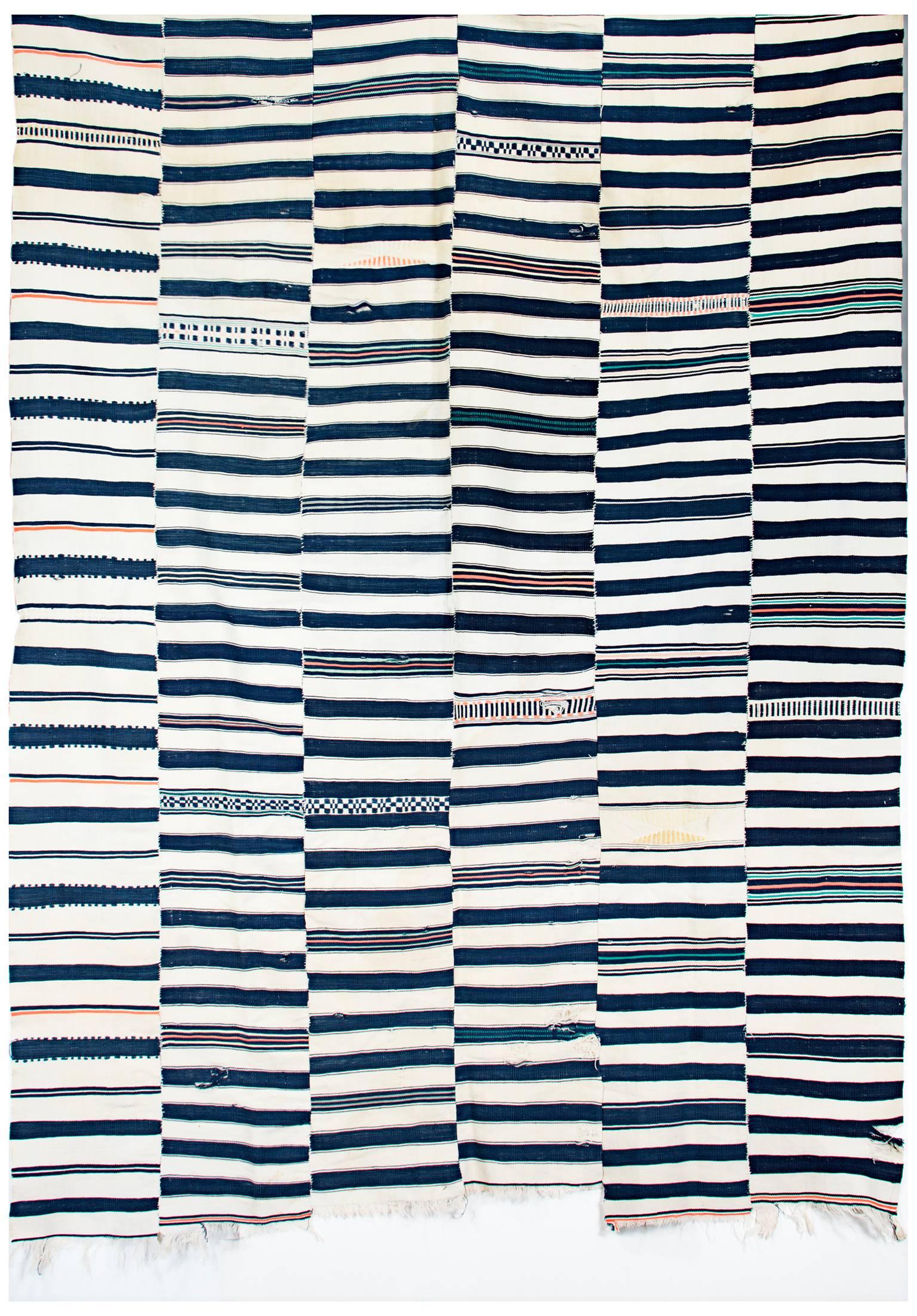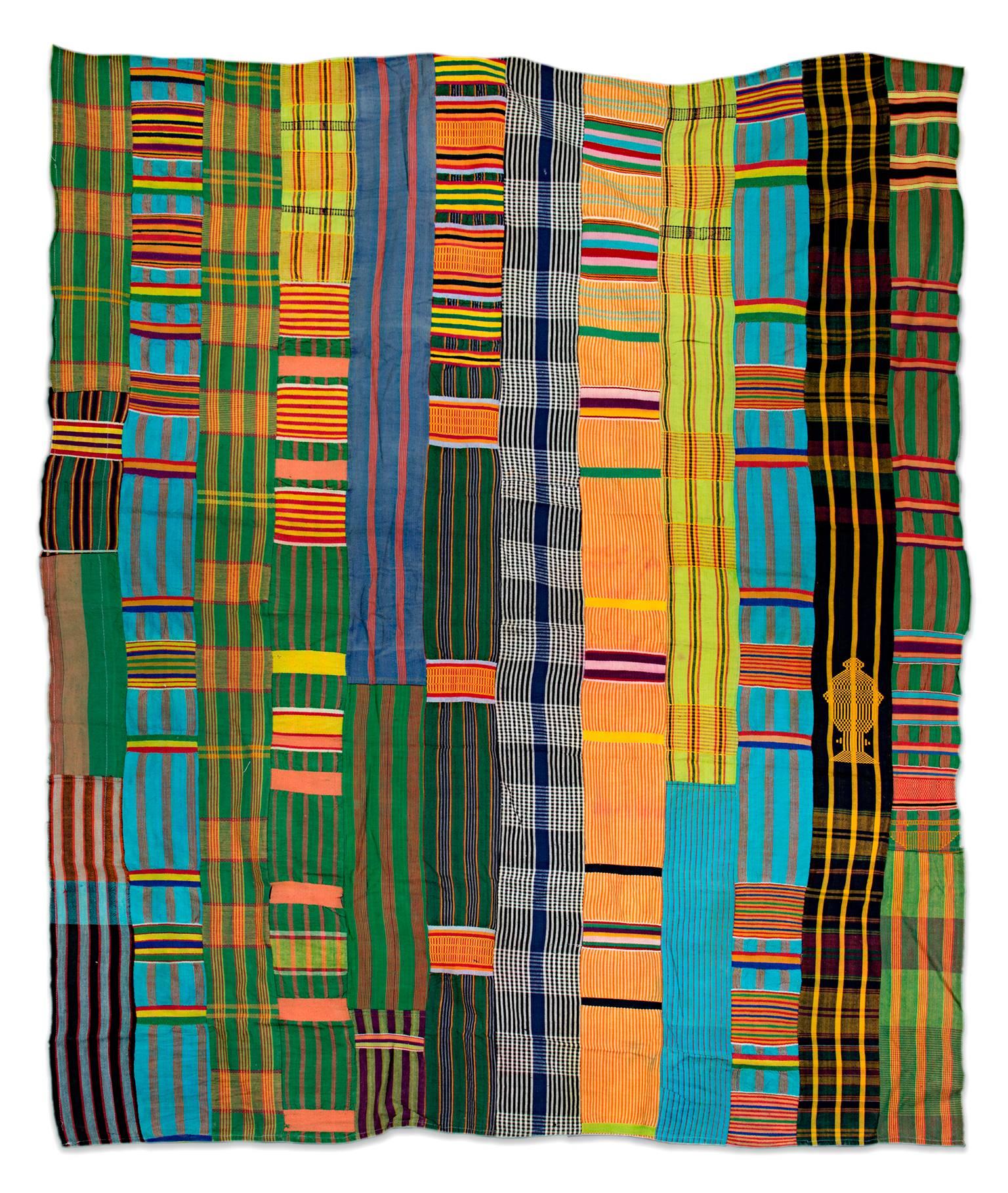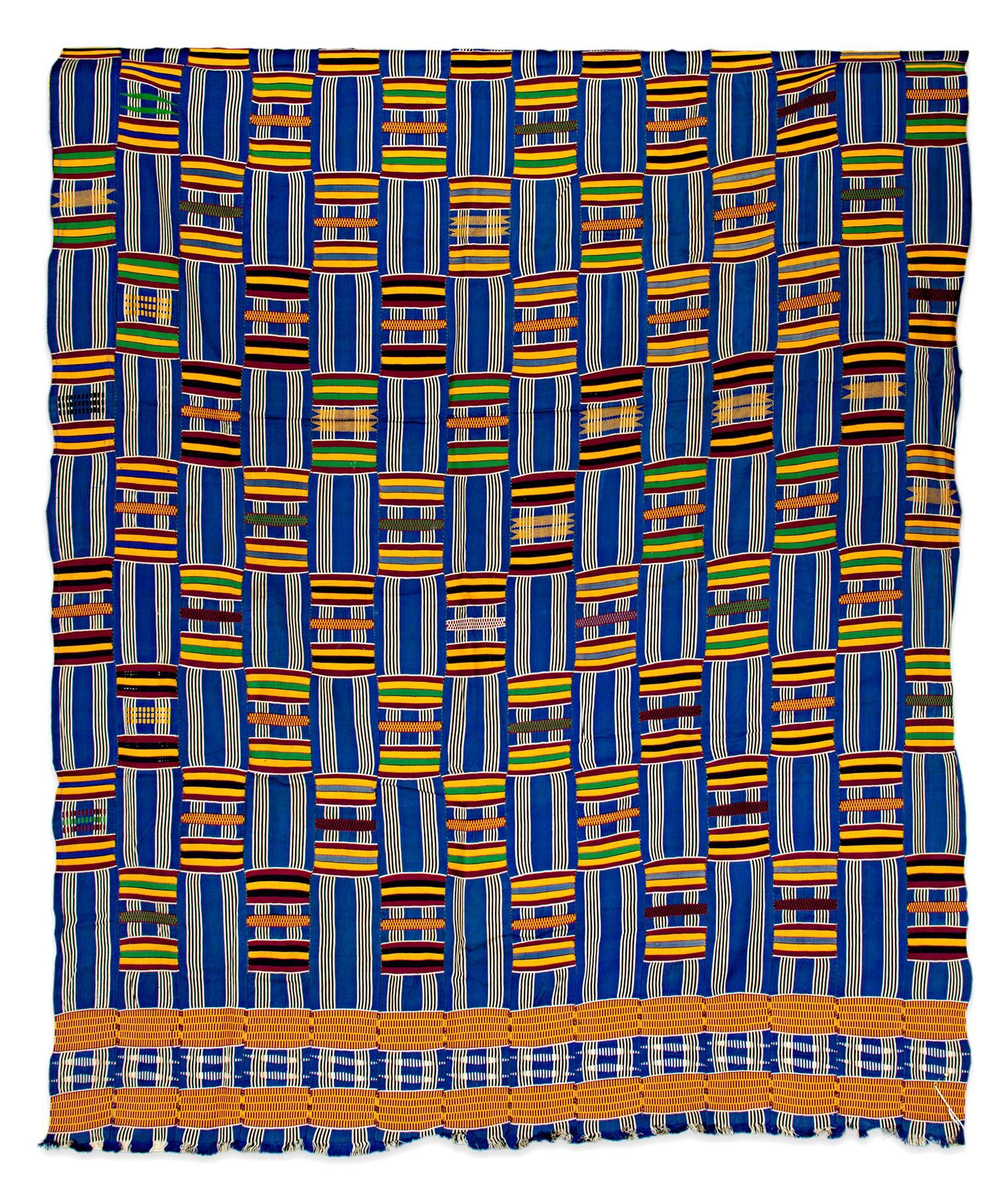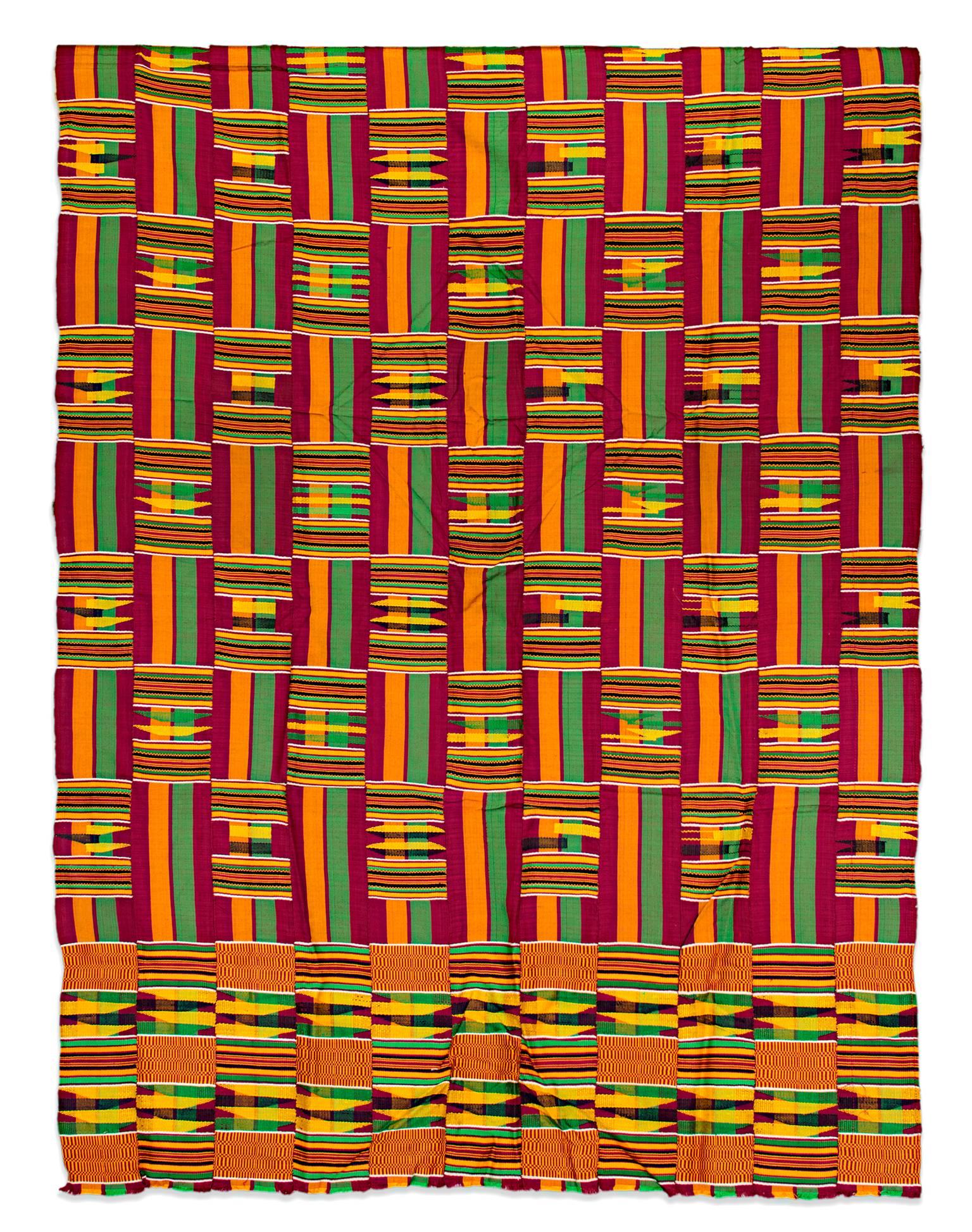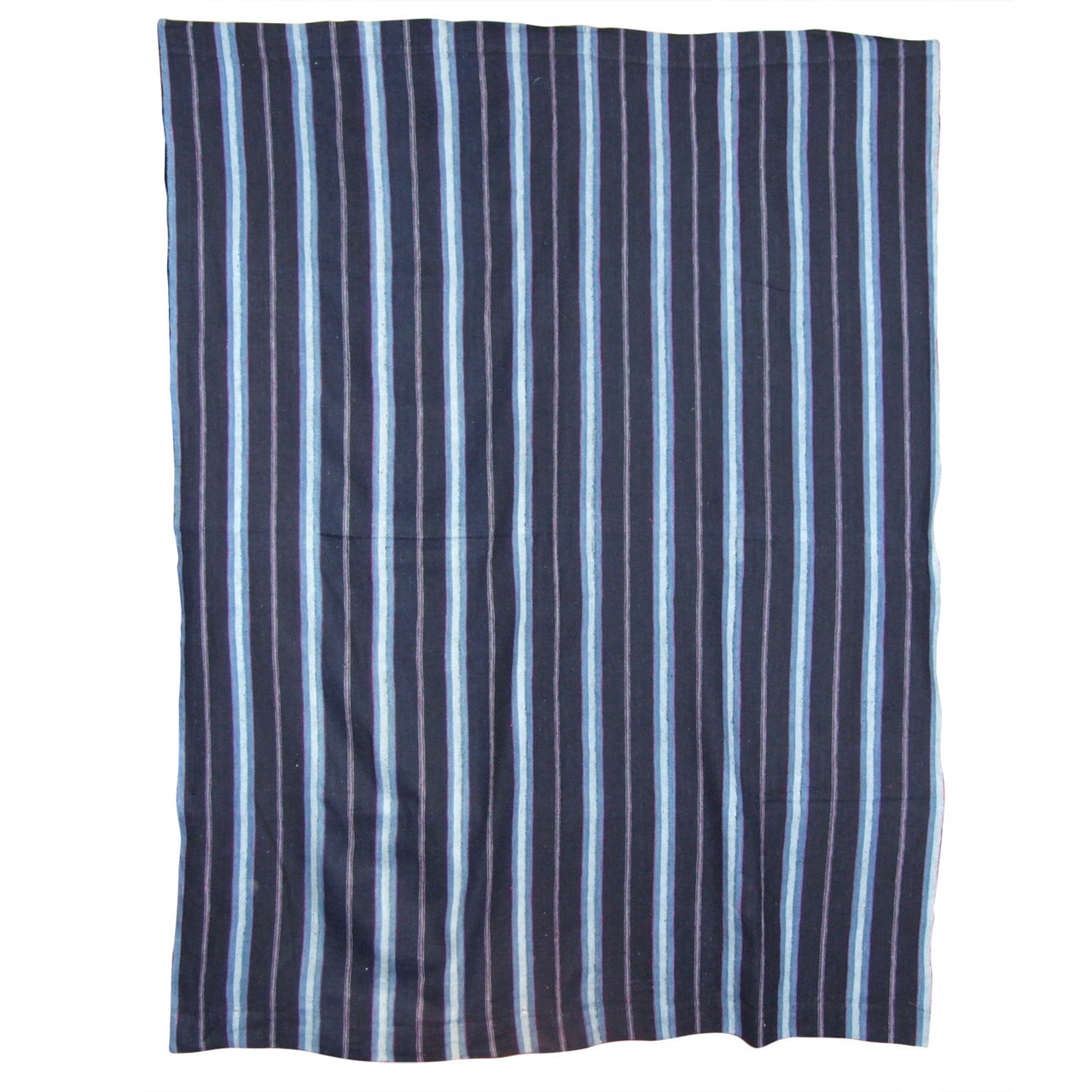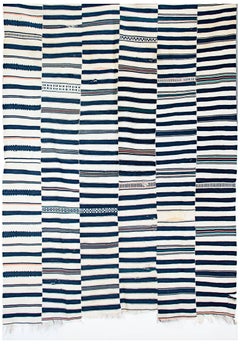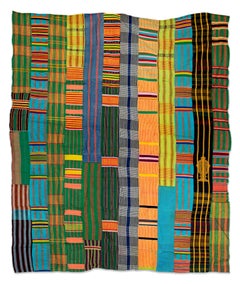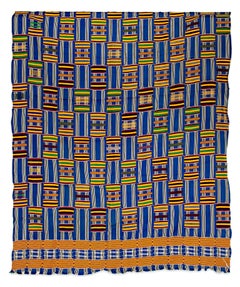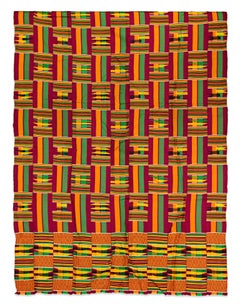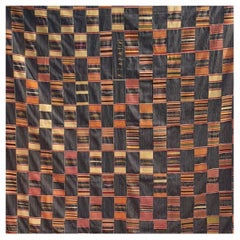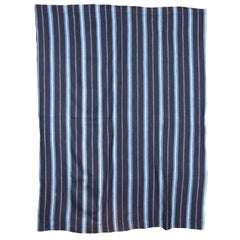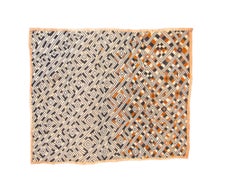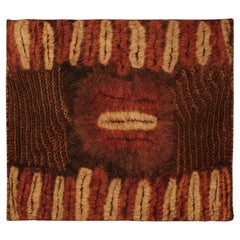Items Similar to "Fulani Body Wrap Tribal cloth, Gambia, " Cloth created c. 1970
Want more images or videos?
Request additional images or videos from the seller
1 of 7
Unknown"Fulani Body Wrap Tribal cloth, Gambia, " Cloth created c. 1970circa 1970
circa 1970
$3,000
£2,277.59
€2,610.05
CA$4,258.10
A$4,644.51
CHF 2,439.88
MX$56,189.10
NOK 30,523.72
SEK 28,820.47
DKK 19,482.19
About the Item
This tribal cloth was created by an unknown artist from the Fulani tribe in Gambia, Africa. This tribe has a population numbering between 20 and 25 million people in total, and is one of the largest ethnic groups in the Sahel and West Africa, widely dispersed across the region. As an ethnic group, they are bound together by the Fula language and their Islamic religious affiliation, their history and their culture.
67" x 42"
About the Seller
4.9
Platinum Seller
Premium sellers with a 4.7+ rating and 24-hour response times
Established in 1966
1stDibs seller since 2017
450 sales on 1stDibs
Typical response time: 3 hours
- ShippingRetrieving quote...Shipping from: Milwaukee, WI
- Return Policy
Authenticity Guarantee
In the unlikely event there’s an issue with an item’s authenticity, contact us within 1 year for a full refund. DetailsMoney-Back Guarantee
If your item is not as described, is damaged in transit, or does not arrive, contact us within 7 days for a full refund. Details24-Hour Cancellation
You have a 24-hour grace period in which to reconsider your purchase, with no questions asked.Vetted Professional Sellers
Our world-class sellers must adhere to strict standards for service and quality, maintaining the integrity of our listings.Price-Match Guarantee
If you find that a seller listed the same item for a lower price elsewhere, we’ll match it.Trusted Global Delivery
Our best-in-class carrier network provides specialized shipping options worldwide, including custom delivery.More From This Seller
View All"Kente Cloth, Ashanti Tribe Ghana, " Cotton Weaving created circa 1970
Located in Milwaukee, WI
This cotton fabric was made by an unknown Ashanti artist. It is mostly black and white. The Ashanti are a major ethnic group of the Akans in Ghana, a fairly new nation, barely more than 50 years old. Ghana, previously the Gold Coast, was a British colony until 1957. It is now politically separated into four main parts. Ashanti is in the center and Kumasi is the capital.
The Ashanti have a wide variety of arts. Bark cloth was used for clothing before weaving was introduced. With weaving, there is cotton and silk. Women may pick cotton...
Category
1970s Folk Art More Art
Materials
Cotton
"Tribal Cloth, Ewe Ghana, " Multicolored Cotton Textile created circa 1965
Located in Milwaukee, WI
The Ewe people from Ghana are master weavers. People of means commission cloths called adanudo ("skilled/wise cloths"). Ewe adanudo textiles often display a tweed effect by twisting ...
Category
1960s Folk Art More Art
Materials
Cotton
"Fabric - Ashanti Tribal Cloth, " Silk Weaving from Africa circa 1930
Located in Milwaukee, WI
Among the most well-known West African textiles is kente cloth, woven by the Ewe and Asante peoples of Ghana. The word kente is not used by the Asante people; it may be derived from ...
Category
1930s Folk Art More Art
Materials
Silk
"Kente Cloth Ashanti Tribe, Ghana, " Silk and Cotton Weaving created circa 1970
Located in Milwaukee, WI
This silk and cotton fabric was made by an unknown Ashanti artist. It features green and orange accents. The Ashanti are a major ethnic group of the Akans in Ghana, a fairly new nation, barely more than 50 years old. Ghana, previously the Gold Coast, was a British colony until 1957. It is now politically separated into four main parts. Ashanti is in the center and Kumasi is the capital.
The Ashanti have a wide variety of arts. Bark cloth was used for clothing before weaving was introduced. With weaving, there is cotton and silk. Women may pick cotton...
Category
1970s Folk Art More Art
Materials
Cotton, Silk
Kilim Rug Hand-woven design, under $4500
Located in Milwaukee, WI
This Kilim rug was hand woven in Turkey, circa mid-20th century. It features patterns in yellow, gray, white, brown, and pink in a beautiful geometric design. Priced under $4500, this rug is sure to be enjoyed with several design schemes as it works in both modern and antique settings. Lovers of carpets will appreciate the wool under their feet as they keep their interior both stylish and comfortable.
Kilim rugs are a pileless rug woven using just one of numerous flat weaving techniques that originated in parts of Turkey. Other geographical areas producing kilim style rug weaving include Iran, North Africa, Afghanistan, Pakistan, China, the Balkans, Central Asia, and the Caucasus. Perfect for the design lovers sale...
Category
Mid-20th Century Folk Art More Art
Materials
Wool, Textile, Organic Material
"Ceremonial Hunting Shirt - Yoruba, Nigeria, " Glass Beads, Shells, & Cloth
Located in Milwaukee, WI
For the Yoruba people of Nigeria, beads and shells are applied to ceremonial garments and headdresses. Beads are an important part of Yoruba culture. henry John Drewal has written th...
Category
1940s Folk Art More Art
Materials
Fabric, Glass, Found Objects
You May Also Like
Ewe Kente
By Ewe People
Located in Glasgow, GB
This is a fine piecevof Kente Textile from the Ewe people of the Volta region of Ghana. Woven from handspun cotton and natural dyes. This is a prestige cloth worn by a high ranking Elder of the Ewe people. The pattern denotes the individuals high status within the community with the dark blue background indicating the wisdom and knowledge of the owner. This piece will date from the 1930's and is in very fine condition. Ewe Kente...
Category
Vintage 1930s Ghanaian Tribal Tribal Art
Materials
Cotton
Yoruba (Nigeria) Early 20th Century Cloth
Located in Greenwich, CT
Fine early 20th Century hand spun indigo cotton and Trans-Sahara silk cloth.
Category
Early 20th Century Nigerian Tribal Quilts and Blankets
Materials
Cotton, Silk
Early 20th Century Geometric African Kuba Cloth
Located in San Francisco, CA
African Kuba cloth. Collection of Lucille A. Lamkin.
Category
Early 20th Century Moroccan and North African Rugs
Early 20th Century Prestige Cloth, Dida People, Ivory Coast
Located in Point Richmond, CA
Early 20th century prestige cloth, Dida people, Ivory Coast
Raffia, natural dyes
An engaging example of resist-dyed prestige cloths, this raffia fragment is professionally mounted o...
Category
Early 20th Century Ivorian Tribal Tribal Art
Materials
Raffia
Mud Cloth 'Bogolanfini', Mali, Bamana People, Mid-20th Century
Located in Ottawa, Ontario
A mud cloth (Bogolanfini),
Mali, Bamana People
mid-20th century.
Hand woven 'discharge dyed' cotton
Approximately 71 x 52 in. (180cm. x 132cm.)
A dazzling geometric pattern...
Category
Mid-20th Century Malian Tribal Tribal Art
Materials
Fabric
Mbuti Ituri traditional handpainted Pygmee bark cloth
By Icons
Located in Zemst, BE
Mbuti Ituri (Congo) traditional handpainted Pygmee bark cloth.
+/- 1920
These cloths we're made from the inside of the bark of the Ficus latex tree.
After been prepared and dryed, ...
Category
Early 20th Century Congolese Tribal Tribal Art
Materials
Wood
More Ways To Browse
Vintage Body Art
Vintage Tribal Fabrics
Lotta Leaves Home
Lowell Hecking
Lynn Boggess
Madison Brimble
Marc Chagall Signed Book
Mario Fernandez
Mario Romero Fernandez
Martha Burkert
Martha Mood Tapestry
Martha Mood
Matt Jordan On Sale
Matthew Russ
Max Ernst Tapestry
Meiji Period Bronze Insect
Mexican Tourist Posters
Michel Ferrand
